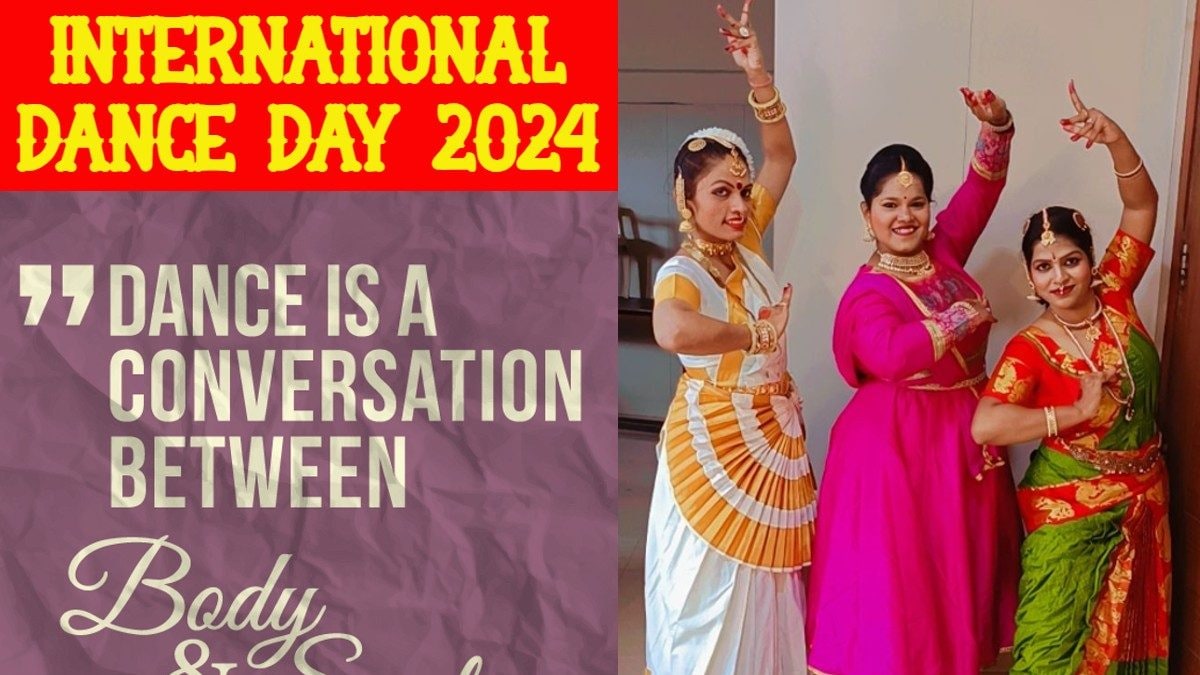International Dance Day 2024: History, Significance, and Types of Classical Dance Forms

Published By: Nibandh Vinod
Last Updated:
India boasts a vibrant tapestry of classical dance forms, each with its unique style and story.
International Dance Day is celebrated on April 29 every year to promote the rich variety of dance forms practiced worldwide.
International Dance Day, also known as World Dance Day, is celebrated globally on April 29 every year to promote the rich variety of dance forms practiced worldwide. It encourages people to immerse themselves in the art and learn more about it through a wide array of events and festivals held across the globe. Since its inception in 1982, the International Dance Committee and the International Theatre Institute (ITI) select an outstanding dance personality to write a message for this special occasion annually.
International Dance Day 2024: History
The history of International Dance Day traces back to 1982, when the Dance Committee of International Theatre Institute (ITI), in collaboration with UNESCO performing arts, founded this day to be commemorated every year on April 29. This special day also happens to be the birthday of famous French dance artist Jean-Georges Noverre, who was born in 1727, who is considered the creator of modern ballet.
Since its beginning, International Dance Day has featured a special message each year from a distinguished choreographer or dancer. The message is selected by the International Dance Committee and the Executive Council of ITI. This message is translated into numerous languages and circulated globally, serving as an inspirational celebration of the universal language of dance.
International Dance Day 2024: Significance
International Dance Day aims to celebrate dance as a universal art form across political, cultural and ethnic barriers. The purpose is to bring people together through the common language of dance, fostering unity and understanding.
Additionally, this day acts as a platform for various dance communities to promote their work on a global scale, raising awareness among governments and leaders about the value and importance of dance in all its forms. This, in turn, encourages support and recognition of this expressive and enriching art.
International Dance Day 2024: Types Of Classical Dance Forms
India boasts a vibrant tapestry of classical dance forms, each with its unique style and story. Bharatanatyam, from Tamil Nadu, captivates with expressive footwork and intricate hand gestures. Kathak, originating in North India, is known for its graceful spins and storytelling elements. Odissi, Odisha’s treasure, showcases the sculpturesque poses of temple dancers. Kerala’s Kathakali dazzles with elaborate costumes and dramatic narratives.
- BharatanatyamOriginated in Tamil Nadu, Bharatanatyam is one of the oldest dance forms and most widely practiced classical dance forms. It is characterised by its precise and intricate footwork, graceful movements and expressive storytelling. During performances, the Bharatanatyam dancers outline their hands and feet with red Kumkum (alta) powder which helps the audience capture the intricate hand and foot gestures of this dance form.
- KathakKathak, with its roots in Northern India, particularly in Uttar Pradesh, is known for its vibrant footwork, intricate rhythms and fast spins. Kathak dancers perform narrative pieces, known as ‘kathas,’ that depict the stories from mythology, history, and everyday life.
- OdissiOdissi hails as one of the major classical dance forms that originated in the temples of Odisha. During an Odissi performance, artists and musicians depict stories, spiritual messages or devotional poems from the Hindu texts. This is done using symbolic costumes and intricate body movement, as well as expressive hand and feet gestures.
- KuchipudiOriginating from Andhra Pradesh, Kuchipudi is a classical dance form that combines dance, drama and music. It has its roots in the ancient Sanskrit texts like Natya Shastra. This dance form is known for its quick footwork, graceful movements and dramatic storytelling. The dance form features solo performances by both male and female dancers.
- ManipuriAlso referred as Manipuri Raas Leela, Manipuri is a classical dance form known for its grace, fluid movements and devotion to Lord Krishna. It finds its roots in Hindu scriptures of Vaishnavism, with a portrayal of the dance of divine love of Krishna with goddess Radha in Vrindavan, popularly known as Raas Leela. Dancers, adorned in traditional Manipur costumes with vibrant designs, enchant audiences with their gentle swaying movements, delicate footwork and intricate hand gestures.
- MohiniyattamMohiniyattam is a classical dance originating from Kerala. The name Mohiniyattam means “the dance of Mohini”, who is Lord Vishnu’s female enchantress avatar. The dance form is known for its soft footwork, hand gestures, and expressive facial expressions.
- KathakaliKathakali is a unique Indian dance-drama from Kerala. This classical dance is known for its bold makeup and elaborate costumes that can weigh up to 12 kilograms. The term “Kathakali” translates to “story-play”.
- SattriyaSattriya originated in the 16th century in Assam’s Vaishnava monasteries. Initially, this dance form was only performed by those who lived in Vaishnavite monasteries, but later it was embraced by other non-monastic artists as well. Sattriya dance is also seen as a modern theatre art. Most of Sattriya’s repertoire is focused on devotion to Krishna. Group dances are a common feature of Sattriya dance, which is often prefaced with a musical interlude on drums.
- ChhauChhau is a semi-classical Indian folk dance. It involves a fluid mix of martial arts and storytelling. Chhau is taught to only male dancers, but now women are also learning it in all-women troupes. There are three types of Chhau dance, each based on a different region. Purulia Chhau is performed in West Bengal in honour of Lord Shiva. Seraikella Chhau is from Jharkhand and is performed during spring festivals to mark the end of winter. The Mayurbhanj Chhau originated in Odisha. It is usually performed on Chaitra Sankranti, a festival marking the start of a new year.

Atul Tiwari is a seasoned journalist at Mumbai Times, specializing in city news, culture, and human-interest stories. With a knack for uncovering compelling narratives, Atul brings Mumbai’s vibrant spirit to life through his writing.





